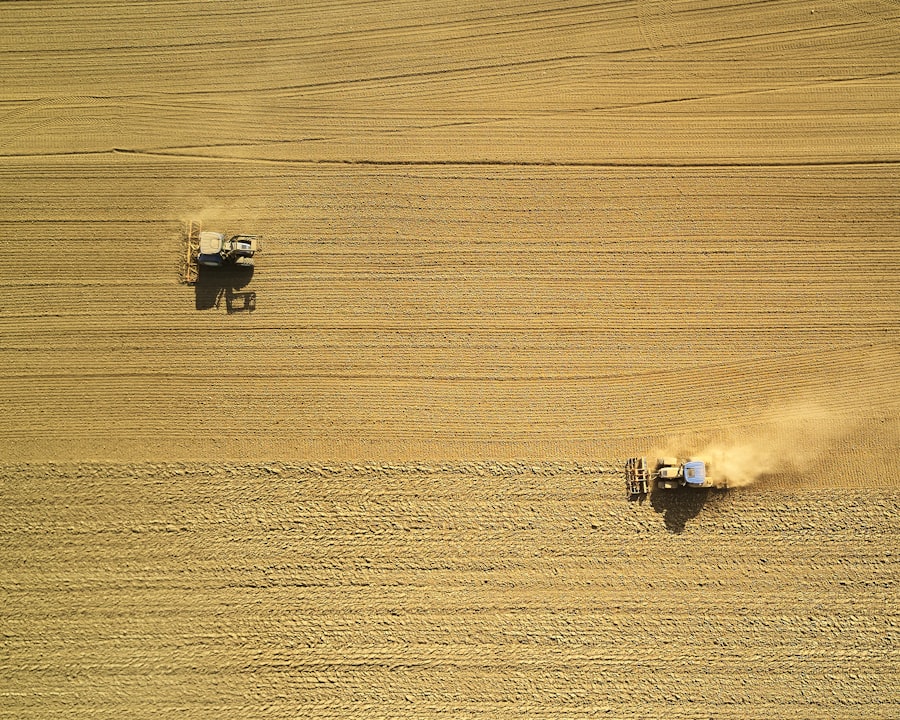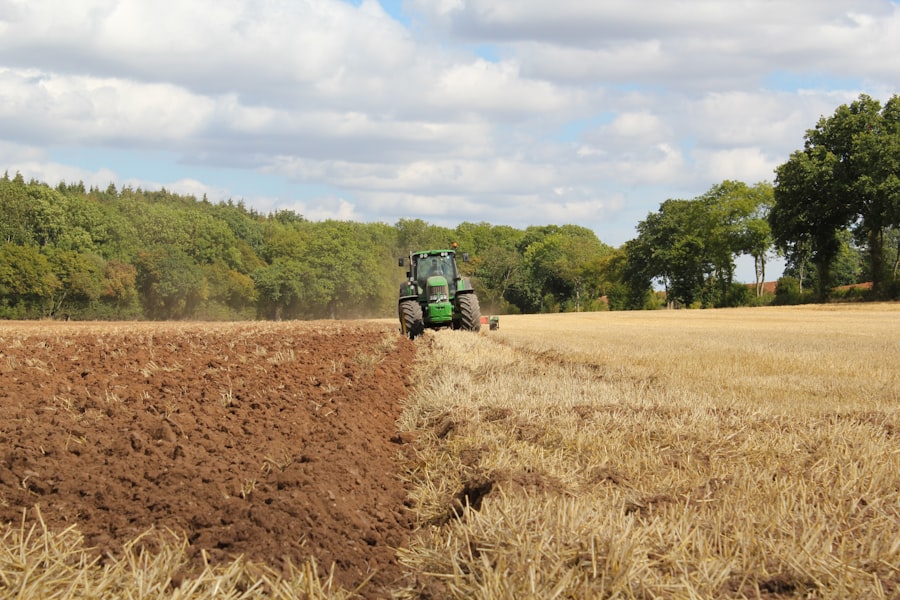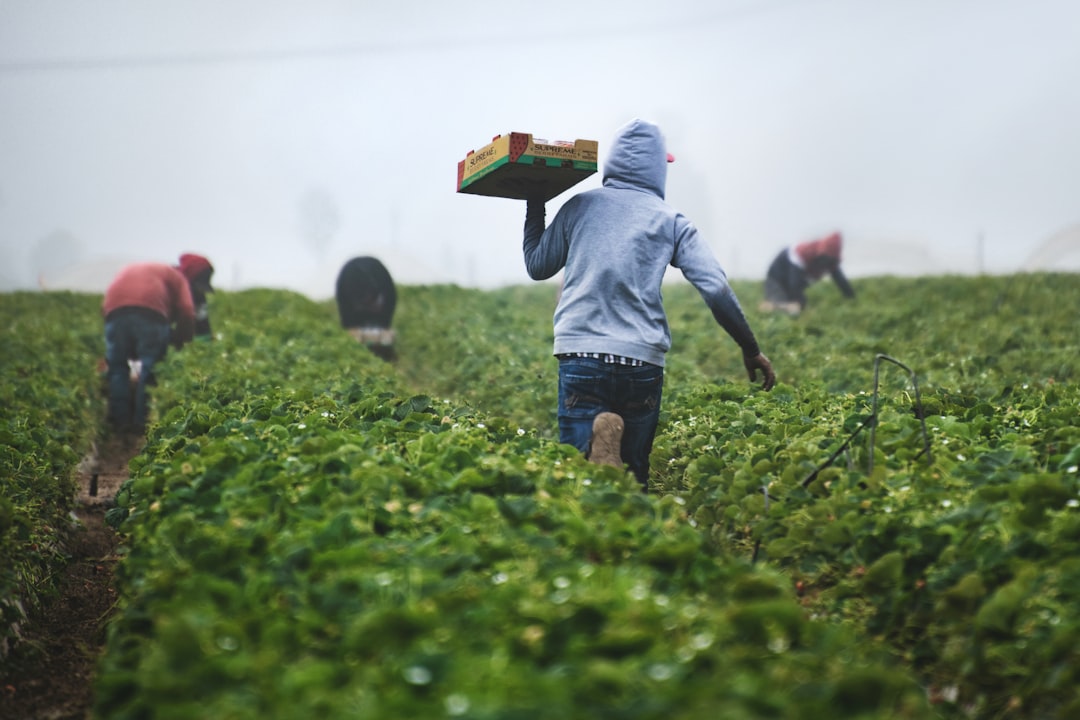The Great Plains, a vast expanse of flatlands stretching across the central United States and parts of Canada, has long been recognized as a cornerstone of American agriculture. This region, characterized by its rich soil and favorable climate, has played a pivotal role in the nation’s agricultural history. From the early days of Native American farming practices to the large-scale mechanized agriculture of the 20th century, the Great Plains has evolved into one of the most productive agricultural areas in the world.
The fertile soil, primarily composed of mollisols, has made it an ideal location for growing staple crops such as wheat, corn, and soybeans, which have become integral to both local economies and global food supply chains. Historically, the Great Plains were home to diverse ecosystems and indigenous cultures that practiced sustainable farming methods long before European settlers arrived. The introduction of plows and other farming technologies in the 19th century transformed the landscape, leading to increased crop yields but also significant environmental changes.
The Dust Bowl of the 1930s serves as a stark reminder of the consequences of unsustainable farming practices, highlighting the delicate balance between agricultural productivity and environmental stewardship. As the region continues to adapt to modern challenges, understanding its agricultural history is crucial for shaping a sustainable future.
Key Takeaways
- The Great Plains has a rich agricultural history, with farming playing a crucial role in shaping the region’s economy and culture.
- Technology has significantly impacted farming in the Great Plains, leading to increased efficiency and productivity in agricultural practices.
- Sustainable farming practices are essential for the future of agriculture in the Great Plains, as they help preserve natural resources and ensure long-term viability.
- Soil health and conservation are of utmost importance in the Great Plains, as they directly impact the success of farming operations in the region.
- Precision agriculture has the potential to revolutionize farming in the Great Plains by optimizing resource use and increasing yields.
The impact of technology on farming in the Great Plains
The advent of technology has dramatically reshaped farming practices in the Great Plains, ushering in an era of increased efficiency and productivity. Mechanization began in earnest during the early 20th century with the introduction of tractors and combine harvesters, which allowed farmers to cultivate larger areas with less labor. This shift not only increased crop yields but also changed the demographic landscape of rural communities, as fewer farmers were needed to produce more food.
Over time, advancements in irrigation systems, seed genetics, and pest management have further enhanced agricultural output, enabling farmers to meet the growing demands of a burgeoning population. In recent years, precision agriculture has emerged as a game-changer for farmers in the Great Plains. Utilizing GPS technology and data analytics, farmers can now monitor crop health, soil conditions, and weather patterns with unprecedented accuracy.
This data-driven approach allows for more informed decision-making regarding planting schedules, fertilizer application, and water usage. As a result, farmers can optimize their resources, reduce waste, and increase profitability while minimizing their environmental impact. The integration of technology into farming practices not only enhances productivity but also paves the way for more sustainable agricultural methods.
Sustainable farming practices and their role in the future of agriculture

Sustainable farming practices are becoming increasingly vital in the Great Plains as farmers seek to balance productivity with environmental stewardship. These practices encompass a range of techniques designed to maintain soil health, conserve water, and promote biodiversity. Crop rotation, cover cropping, and reduced tillage are just a few examples of methods that help preserve soil integrity while enhancing crop resilience.
By adopting these practices, farmers can mitigate the adverse effects of monoculture and soil degradation that have historically plagued the region. The future of agriculture in the Great Plains hinges on the widespread adoption of sustainable practices. As consumers become more environmentally conscious, there is a growing demand for sustainably produced food.
Farmers who embrace these methods not only contribute to environmental conservation but also position themselves favorably in a competitive market. Additionally, sustainable farming can enhance community resilience by fostering local food systems and reducing reliance on external inputs. As the agricultural landscape continues to evolve, integrating sustainability into farming practices will be essential for ensuring long-term viability in the Great Plains.
The importance of soil health and conservation in the Great Plains
| Metrics | Data |
|---|---|
| Soil Erosion Rate | 10 tons per acre per year |
| Organic Matter Content | 2-5% |
| Soil Moisture Retention | 20-30% |
| Soil Health Index | 65 (on a scale of 0-100) |
Soil health is a critical component of successful agriculture in the Great Plains, serving as the foundation for crop production and ecosystem stability. Healthy soil is rich in organic matter, nutrients, and microorganisms that support plant growth while also regulating water retention and drainage. However, intensive farming practices over the years have led to soil degradation, erosion, and nutrient depletion.
Recognizing the importance of soil conservation is paramount for farmers aiming to sustain their livelihoods while protecting the environment. Conservation practices such as contour farming, terracing, and agroforestry can significantly improve soil health by reducing erosion and enhancing biodiversity. These methods not only preserve valuable topsoil but also promote carbon sequestration, which is essential for mitigating climate change impacts.
Furthermore, initiatives aimed at restoring degraded soils can lead to increased agricultural productivity over time. By prioritizing soil health and conservation efforts, farmers in the Great Plains can ensure that their land remains productive for future generations while contributing to broader environmental goals.
Precision agriculture and its potential for revolutionizing farming in the region
Precision agriculture represents a transformative approach to farming that leverages technology to enhance efficiency and sustainability in the Great Plains. By utilizing tools such as drones, satellite imagery, and soil sensors, farmers can gather real-time data on crop performance and environmental conditions. This information allows for targeted interventions that optimize resource use—such as water and fertilizers—tailored to specific areas within a field rather than applying uniform treatments across entire plots.
The potential benefits of precision agriculture extend beyond mere efficiency gains; they also encompass environmental sustainability. By minimizing inputs and maximizing outputs through data-driven decision-making, farmers can reduce their ecological footprint while maintaining high levels of productivity. Moreover, precision agriculture can help mitigate risks associated with climate variability by enabling farmers to respond swiftly to changing conditions.
As technology continues to advance, its integration into farming practices will likely play a crucial role in shaping a more resilient agricultural landscape in the Great Plains.
The role of climate change in shaping the future of agriculture in the Great Plains

Climate change poses significant challenges for agriculture in the Great Plains, impacting everything from crop yields to water availability. Rising temperatures and shifting precipitation patterns threaten traditional farming practices that have been established over generations. Farmers are increasingly faced with unpredictable weather events such as droughts and floods that can devastate crops and disrupt planting schedules.
As these challenges intensify, adapting to climate change becomes imperative for ensuring food security in the region. To navigate these changes effectively, farmers must adopt innovative strategies that enhance resilience against climate-related risks. This may include diversifying crop rotations to include drought-resistant varieties or implementing advanced irrigation techniques that optimize water use during dry spells.
Additionally, investing in research and development focused on climate-smart agriculture can provide valuable insights into best practices for adapting to changing conditions. By proactively addressing climate change impacts, farmers in the Great Plains can safeguard their livelihoods while contributing to global efforts aimed at mitigating climate-related challenges.
The potential of vertical farming and indoor agriculture in the region
As urbanization continues to rise and arable land becomes increasingly scarce, vertical farming and indoor agriculture present exciting opportunities for innovation in the Great Plains. These methods involve growing crops in controlled environments using stacked layers or hydroponic systems that maximize space utilization while minimizing resource consumption. Vertical farms can produce fresh produce year-round regardless of external weather conditions, addressing food security concerns while reducing transportation emissions associated with long-distance food distribution.
The potential benefits of vertical farming extend beyond mere efficiency; they also encompass sustainability goals by reducing water usage and eliminating pesticides through controlled environments. Furthermore, these systems can be integrated into urban settings, bringing food production closer to consumers and fostering local food systems. As technology advances and costs decrease, vertical farming could become an integral part of the agricultural landscape in the Great Plains—offering a viable solution to some of the pressing challenges facing traditional farming methods.
The integration of data analytics and artificial intelligence in farming practices
The integration of data analytics and artificial intelligence (AI) into farming practices is revolutionizing agriculture in the Great Plains by enabling more informed decision-making processes. Farmers can now leverage vast amounts of data collected from various sources—such as weather forecasts, soil sensors, and market trends—to optimize their operations effectively. AI algorithms can analyze this data to identify patterns and predict outcomes, allowing farmers to make proactive adjustments that enhance productivity while minimizing waste.
Moreover, AI-driven technologies can assist with tasks ranging from pest management to yield forecasting. For instance, machine learning models can analyze historical data to predict pest outbreaks or disease risks based on environmental conditions. This predictive capability empowers farmers to take timely action before issues escalate into significant problems.
As data analytics continues to evolve within agriculture, its potential for improving efficiency and sustainability will be crucial for shaping a resilient future for farming in the Great Plains.
The role of government policies and subsidies in supporting the future of agriculture in the Great Plains
Government policies and subsidies play a vital role in shaping the agricultural landscape of the Great Plains by providing financial support and resources necessary for innovation and sustainability initiatives. Programs aimed at promoting conservation practices or funding research into new technologies can significantly impact farmers’ ability to adapt to changing conditions while maintaining productivity levels. Additionally, subsidies for crops or sustainable practices can incentivize farmers to adopt environmentally friendly methods that benefit both their operations and local ecosystems.
Ensuring that policies are accessible and tailored to meet the unique needs of those operating within the Great Plains is essential for fostering a supportive environment for agricultural innovation. By prioritizing policies that promote sustainability and resilience within farming communities, governments can help secure a prosperous future for agriculture in this vital region.
The challenges and opportunities for young farmers in the region
Young farmers face a unique set of challenges as they enter an industry marked by rapid technological advancements and shifting market demands. Accessing land remains one of the most significant hurdles; high land prices often deter new entrants from establishing their operations. Additionally, navigating complex regulations surrounding farming practices can be daunting for those without prior experience or mentorship opportunities.
Despite these challenges, young farmers also have access to unprecedented opportunities driven by innovation within agriculture. With a growing emphasis on sustainability and local food systems, younger generations are well-positioned to lead efforts toward more environmentally friendly practices that resonate with consumers’ values. Furthermore, advancements in technology provide tools that enable young farmers to operate more efficiently than ever before—allowing them to compete effectively against established operations while carving out their niche within the industry.
The potential for a sustainable and innovative future for farming in the Great Plains
The future of agriculture in the Great Plains holds immense potential for sustainability and innovation as farmers adapt to evolving challenges while embracing new technologies. By prioritizing soil health, integrating precision agriculture techniques, and exploring alternative farming methods such as vertical farming or indoor agriculture, stakeholders within this region can work toward creating resilient food systems that benefit both local communities and global markets. As young farmers step into leadership roles within this dynamic landscape—armed with fresh perspectives on sustainability—they will play an essential part in shaping an agricultural future that balances productivity with environmental stewardship.
The future of farming in the Great Plains is a topic of significant interest as the region faces challenges such as climate change, soil degradation, and water scarcity. Innovative agricultural practices and technologies are being explored to ensure sustainable farming in this vital area. An insightful article that delves into these issues and potential solutions can be found on MyGeoQuest. For more information, you can read the related article by visiting
